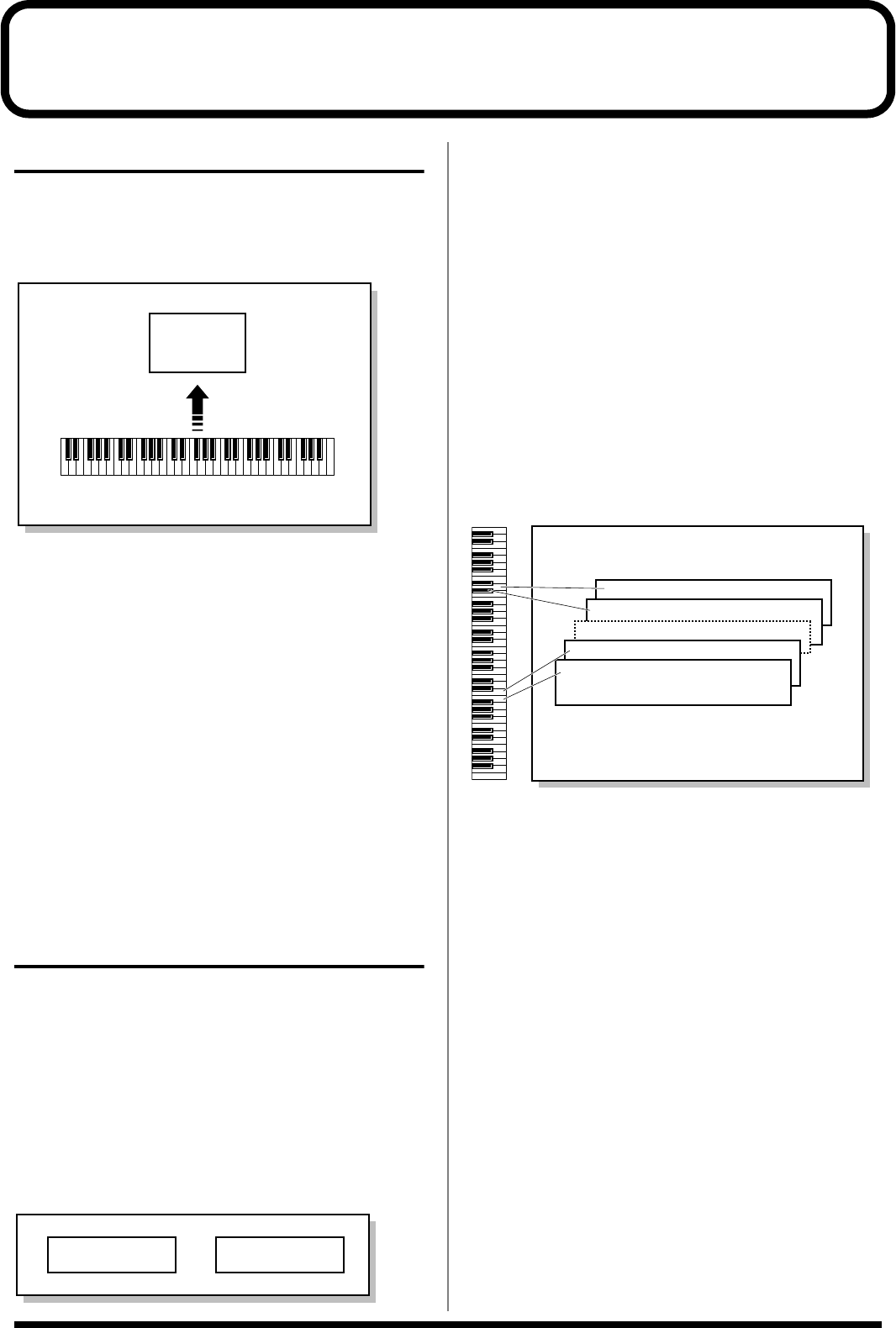
40
Overview of the JUNO-D
How the instrument is organized
Basic structure
Broadly speaking, the JUNO-D consists of a
keyboard controller
section and a
sound generator
section.
fig.r01-01.e
Keyboard controller section
This section consists of the keyboard, pitch bend/modulation lever,
panel knobs and buttons, and D Beam controller. It also includes any
pedals that may be connected to the rear panel. The performance
information generated when you do things such as press/release a
key, or depress the hold pedal is sent to the sound generator section
and/or an external sound device.
Sound generator section
According to the performance data it receives from the Keyboard
Controller section, this section generates and outputs sounds from
the output jacks and headphone jack. Up to sixteen parts can each
play different sounds (patches), with a simultaneous total of up to 64
notes. This section also includes three effects (reverb, chorus, multi-
effects).
Classification of JUNO-D sound
types
When using the JUNO-D, you will notice that a variety of different
categories come into play when working with sounds. What follows
is a simple explanation of each sound category.
Tones
On the JUNO-D, the tones are the smallest unit of sound. However,
it is not possible to play a tone by itself. The patch is the unit of
sound that can be played, and the tones are the basic building blocks
that make up the patch.
fig.r01-02.e
Patches
On the JUNO-D, the sounds you use for normal playing (e.g., from
the keyboard) are called
patches
. A patch is analogous to an
instrument held by a member of an orchestra. Each patch consists of
two tones; an
upper tone
and
lower tone
. You can assign the two
tones to their own region of the keyboard, or play them together to
produce a richer sound (p. 44). Detailed settings can be made
independently for each of the two tones (p. 46).
Rhythm sets
Rhythm sets are groups consisting of various percussion instrument
sounds. Since percussion instruments generally do not play
melodies, there is no need for a percussion instrument sound to be
able to play a scale on the keyboard. It is, however, more important
that as many percussion instruments as possible be available to you
at the same time. Therefore, each key (note number) of a rhythm set
will produce a different percussion instrument.
fig.r01-04.e
Rhythm sets
Performance
A performance is a set of sounds containing patches for the sixteen
parts used when you use the Rhythm Guide or when using the
JUNO-D with an external MIDI device.
Part
A part corresponds to a single musician in a band or orchestra. Since
the JUNO-D has sixteen parts, you can use sixteen different patches or
rhythm sets to play as many as sixteen performances simultaneously.
Current part
The “current part” is the part that will sound when you play the
keyboard.
The JUNO-D has a total of sixteen parts. For details on how to switch
the current part, refer to
“Selecting a part”
(p. 43).
Keyboard Controller Section (controllers
such as keyboard, pitch bend lever, etc.)
Sound
Generator
Section
Play
Patch
Upper Tone Lower Tone
+
Note Number 98 (D7)
Note Number 97 (C#7)
Note Number 36 (C2)
Note Number 35 (B1)
Rhythm Set
JUNO-D_e.book 40 ページ 2004年6月11日 金曜日 午後1時21分


















